The Gift of South Dakota
Subscriptions to South Dakota Magazine make great gifts!
Subscribe today — 1 year (6 issues) is just $29!
Altars of Grass and Sky
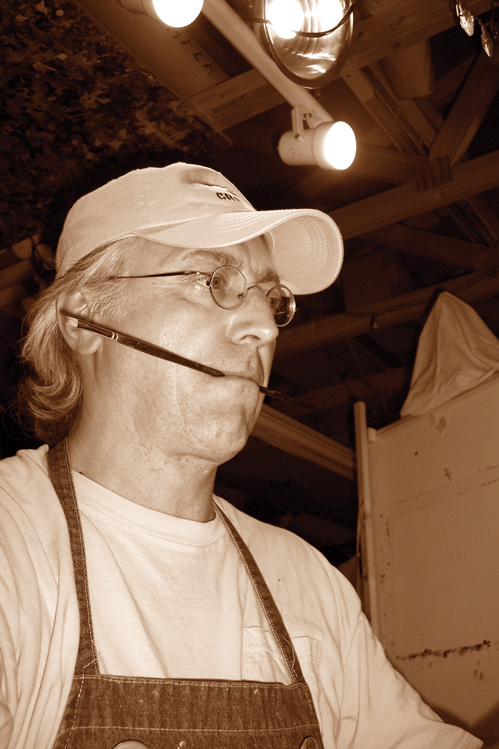 |
| George Prisbe-Przybysz in his studio. |
“Approach your work like a priest to the altar,” said writer Ernest Hemingway. That quote is a favorite of Black Hills painter George Prisbe-Przybysz. Canvas on an easel is his altar. Dogs sit at his feet while he paints, and Beethoven wafts through his studio in a tiny hamlet called Hanna, 12 miles southwest of Lead.
Prisbe’s longtime friend, Augustana University art professor emeritus Carl Grupp, says the surroundings are part of Prisbe’s process. “I heard he wouldn’t start painting in his studio until he had everything the way he wanted it,” Grupp says. “It’s not just the paintings that are impeccable, but the whole environment he lives in and that he creates for himself.”
And once Prisbe begins to paint, it is a spiritual experience. “I don’t paint to find meaning in life, but to create meaning,” Prisbe says. “I am not entirely certain who or what is the author of my paintings. It is from my hand, through my heart, that they come to be, but some other force is at work.”
Prisbe is a native of Edmunds County. His high school didn’t offer art, but his mother encouraged him to play with clay and paint, and eventually art consumed much of his free time. “I never did hunt or fish, but I did play sports. It was not uncommon for me to go home after a game to draw or paint instead of hanging out downtown.”
Prisbe attended Northern State University in Aberdeen, then studied painting and printmaking at Ohio University. When professors labeled his art as having a “Midwestern aesthetic,” he worked to disprove them until the day he got a postcard featuring a Harvey Dunn painting in the mail, and he felt a renewed appreciation for the landscapes back home. That postcard image set him on the path to become a landscape painter, using oils, acrylics and watercolors.
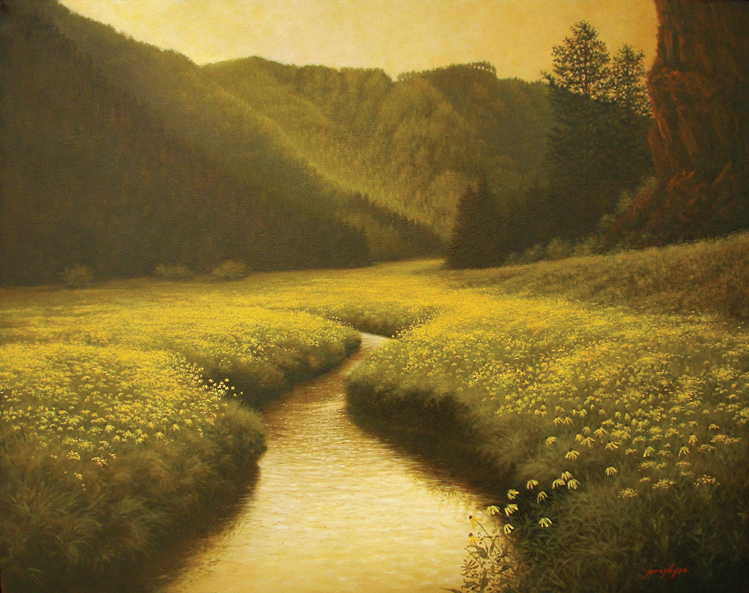 |
| Acetes, Pennington County. |
Professor Grupp became acquainted with Prisbe when he traveled to Northern State to demonstrate how to make a monoprint. “I found a dead bird on campus and brought it inside and did a drawing of it on the plate,” Grupp recalls. “Shortly after, I saw George had prepared the most beautiful monotypes of that bird that I had ever seen done. And I was supposed to be teaching him.”
Grupp surmises that Prisbe’s landscapes may someday be as important to South Dakotans as Harvey Dunn’s works. “I don’t know of another artist who nowadays is doing that kind of impeccable research on the landscape. His dedication is powerful.”
Prisbe is a student of tonalism, a movement that began at the turn of the 20th century. He describes it as “typified by focused views of intimate and unpopulated landscapes, executed with subdued, harmonious modulations of color, unified by tonal values, and infused with spirituality, mood and emotion.” Tonalism emerged in Europe; one of its major figures, Jean-Baptiste-Camille Corot, is Prisbe’s self-described hero in the art world. Prisbe and Corot share an interesting similarity; neither ventured past their home landscapes for inspiration.
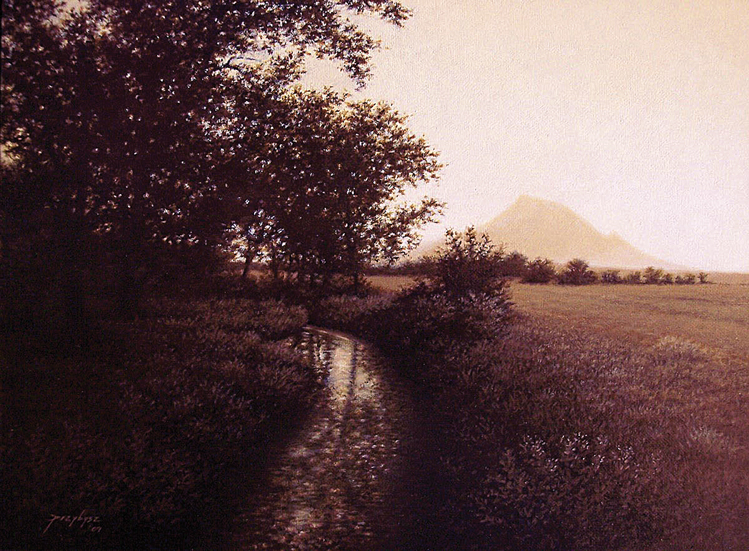 |
| Pathetique, Meade County. |
A few years ago, Prisbe was painting in his studio on a bright July afternoon. “All of a sudden the room darkened and I heard a roaring sound, as of wind.” He looked out the window, expecting to see a summer storm. “What I saw was the same bright, calm day that I had experienced earlier. The dimmed light and intense sound continued for several more seconds before I realized I was not alone,” Prisbe recalls. He says he felt the presence to be Corot. “I sat there, stunned and shaken, for several more seconds before normalcy returned. Still, to this day, I do not know quite what to make of this, but I believe the experience to have been an honor.”
Prisbe is now working on a Bear Butte series. “The spiritual forces of the site are palpable. I am struck that no matter the angle or vantage point, the mountain is always unmistakable as Bear Butte. I doubt that my interest in Bear Butte and this series will end until I do.”
Prisbe is also on a mission to drive every mapped road in the state. “I have an old Game, Fish & Parks atlas and I have been diligently marking off roads since the early ’80s. I realize how ridiculous and impossible this goal is,” he surmises, “but I like the idea. The rewards always prove worthwhile.”
Editor’s Note: This story is revised from the January/February 2013 issue of South Dakota Magazine. To order a copy or to subscribe, call (800) 456-5117.




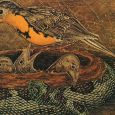
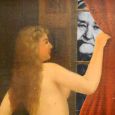
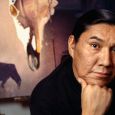


Comments
Hi George
I'm in the northern hills for this week Aug 15-20 2021
Would love to connect with you and Pat.
Sheila.Hazard@yahoo.com
605.351.5854